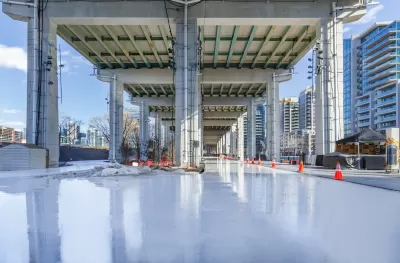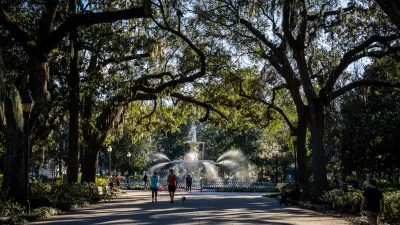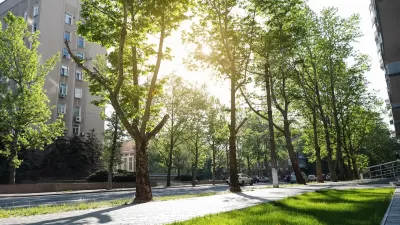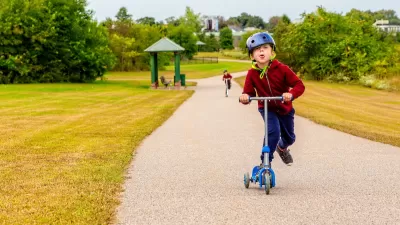The park is part of a global movement to build public spaces that connect neighbors and work with local elements to serve as key parts of a city’s green infrastructure.

A new park in Montreal sits atop a disused railway track and features ‘mini-forests’ planted to encourage the quick growth of native plants, reports Kelsey Rolfe in The Globe and Mail.
“The park’s design hearkens back to its previous life: after the tracks were abandoned in the 1990s, trees and vegetation grew wild on the site. It became an unofficial but beloved local park and community space for the part-industrial neighbourhood until a developer cut down the trees without permission in 2013.” Now, thanks to a decade of community advocacy, the city spent $10 million to acquire and redevelop the site.
Gorilla Park, as it’s known, hosts over 1,500 trees and shrubs and seeks to mimic the spontaneous forest that grew on the site previously. According to Rolfe, “It’s just one example of the transformation under way across Canada to make public spaces more sustainable and community focused.” In Toronto, a 1.75-kilometer linear park dubbed The Bentway nestled under the Gardiner Expressway doubles as a recreational space and stormwater infrastructure. “ It now draws hundreds of thousands of Torontonians every year for skating in the winter, free public events and art installations in the other seasons and cycling and walking on its trail network year-round.”
FULL STORY: Turning railway lands into parkland: How cities are reinventing public space

Alabama: Trump Terminates Settlements for Black Communities Harmed By Raw Sewage
Trump deemed the landmark civil rights agreement “illegal DEI and environmental justice policy.”

Planetizen Federal Action Tracker
A weekly monitor of how Trump’s orders and actions are impacting planners and planning in America.

The 120 Year Old Tiny Home Villages That Sheltered San Francisco’s Earthquake Refugees
More than a century ago, San Francisco mobilized to house thousands of residents displaced by the 1906 earthquake. Could their strategy offer a model for the present?

Opinion: California’s SB 79 Would Improve Housing Affordability and Transit Access
A proposed bill would legalize transit-oriented development statewide.

Record Temperatures Prompt Push for Environmental Justice Bills
Nevada legislators are proposing laws that would mandate heat mitigation measures to protect residents from the impacts of extreme heat.

Downtown Pittsburgh Set to Gain 1,300 New Housing Units
Pittsburgh’s office buildings, many of which date back to the early 20th century, are prime candidates for conversion to housing.
Urban Design for Planners 1: Software Tools
This six-course series explores essential urban design concepts using open source software and equips planners with the tools they need to participate fully in the urban design process.
Planning for Universal Design
Learn the tools for implementing Universal Design in planning regulations.
Clanton & Associates, Inc.
Jessamine County Fiscal Court
Institute for Housing and Urban Development Studies (IHS)
City of Grandview
Harvard GSD Executive Education
Toledo-Lucas County Plan Commissions
Salt Lake City
NYU Wagner Graduate School of Public Service





























